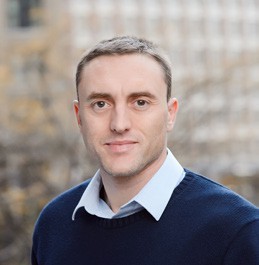EXCLUSIVE INTERVIEW
The changing landscape of rare disease research
Pharmafile speaks to Chiesi Group
Pharmafile sits down with Giacomo Chiesi of Chiesi Group to discuss the challenges faced when studying and treating rare diseases, as well as his hopes for the future of rare disease research
Pharmafile: Chiesi Group launched the Rare Disease Business Unit in 2020. How did the pandemic affect the launch, and the move into work with rare diseases?
Giacomo Chiesi: We decided to prioritise people – chiefly, patients and their families. So, we focused on preserving the supply of all our products to make sure the supply was uninterrupted. We also expanded patient services and organised home delivery for many of our products in many different countries, to ensure that patients in need of therapy wouldn’t be left behind or forgotten. In many cases, we saved them not just the hassle of going to the hospital, but also from the risk of being exposed to COVID-19. For example, if they have to be infused, we took the infusion to their home.
We also decided to accelerate the many different ways we support patients in getting access to therapy. We made some of the process faster, actually, by interacting with payers to make sure that the patients could get access, for example through their benefits reverification process in the US, and this worked seamlessly.
Unfortunately, we had to stop one clinical trial because patients didn’t want to show up at the hospital; they didn’t want to run the risk of getting exposed to COVID-19. We’re now talking to the FDA to find potential solutions, as to this day we still haven’t been able to complete that study.
We also prioritised our people’s safety. Like most institutions and organisations around the world, we went into ‘smart working’.
I will say that COVID-19 had some advantages. It really helped us focus on the things that matter the most for our patients, and really posed the tough question: what do the patients really care about?
An uninterrupted supply came up prominently as the most important thing for them.
Being virtual wasn’t necessarily a negative for us, it actually made us more efficient. But it did make it a bit more difficult to create a completely cohesive culture because we were remote.
What are some of the more unique challenges when developing rare disease treatments for diseases such as Leber’s hereditary optic neuropathy, which is an inherited form of vision loss only affecting 1 in 50,000?
Obviously, they all have different stories and the patients have different stories within their conditions, but at the same time there’s a lot of commonalities between many of these diseases.
Most prominent is the lack of knowledge about the disease. Leber’s affects about 80,000 people, which means the patients are very few, so even the most expert doctors are only going to see a few dozen or so in their professional lifetime. In most cases, the healthcare providers are not necessarily aware of all the details themselves, such as the evolution of the standard of care, because there are so many specific diseases that no one physician can really know them all. There are 7,000 known rare diseases and even just knowing the names of those 7,000 diseases is challenging.

“ On a more general level, if there’s a small patient population for a specific disease, there’s not enough demand to warrant spending money on clinical trials into that specific treatment for that disease ”
At the same time, regulatory agencies may have very limited information and know very little about the disease, if anything at all. So, this all translates into a difficult path for clinical development, because it’s difficult to design a simple way of measuring clinical benefit.
It’s difficult to come up with measures, or ‘endpoints’, that are shared by the entire community. Sometimes no one has ever investigated a well-defined endpoint that is acceptable for the physicians and for the regulators, that is not completely speculative or cannot be measured, or puts the patient in a very uncomfortable position. So, you need to continue to study the disease at a clinical level for decades to solve that problem, and advance the knowledge about that disease. It’s therefore also very relevant to continue to spread disease awareness with the physicians and the patients themselves via patient advocacy groups.
Another unique challenge is that reimbursement for some rare disease therapies is becoming really challenging. Most countries outside of the US have a universal healthcare system, where the government pays for every patient and every medication, in principle. Historically, the pricing and reimbursement authorities set up their enforcement mechanisms with mathematical formulas that are really good at quantifying the added clinical value for large, highly prevalent diseases. However, these formulas are not adequate, even statistically, to assess the added value to rare disease therapies, because they require large amounts of data that you can’t get. These make negotiations long, complex and uncertain. In many European countries, patients actually cannot get access to therapy until those negotiations are concluded. And some countries aren’t in great financial shape, so they’re going to get very aggressive in trying to compress their own costs, including medication costs and negotiations.
How do we resolve that? By trying to expedite negotiations to make them as quick and as transparent with the authorities as possible. Then providing them with knowledge about the disease and the therapy, and ending up making significant concessions. Commercialising the drugs of today in a profitable manner is fundamental to finance future R&D efforts, disease awareness and diagnosis efforts for future therapies in new rare disease areas. For some of the therapies, the outcome may be either breaking even or losing money but that is clearly not sustainable for the company.
How important is collaboration with patients, healthcare providers and advocacy groups when developing treatments for rare diseases?
Collaboration is fundamental. The first reason is that patients are the only ones who can describe the problem and how they tackle it every day. When you have a rare disease, you might be one in a million with that condition, so they have that rare expertise. So, as a company, you need to listen to the patients, their families and advocacy groups to understand their medical needs. You need to be very collaborative, an attentive listener, and you need to have defined processes that will allow you to get the patients’ feedback at the beginning of your research, not just the end. You need to continue to listen to the patient’s needs, and adjust your services, supply and future development to those needs.
The second reason is that we serve the patients by going ‘beyond the molecule’ and providing not just products, but solutions. We deliver most of our products to their homes; not all, but we are working on that. We organise seminars and make our websites available with disease information. We work with physicians to put in place the protocols to expedite diagnosis. We provide psychological support to patients and their families through partnerships with other institutions. Furthermore, we work with the physicians and patients to facilitate access to therapy, and the process of reimbursement with the insurance companies.
For you to be able to do all of this, you need to have a great relationship with the stakeholders and the system. You need to observe that the system is a spectrum of different players, and be able to speak the right language to all of them.
Why do you think it’s important to focus on rare diseases, especially with regards to future research into treatments, as there are so many patient groups that have unmet needs?
As I mentioned, there are 7,000 known rare diseases, but only 300 of them have any kind of therapy, including experimental therapy. So that’s only about 5% of rare diseases that have something that can be offered to the patients.
Also, rare diseases individually impact relatively few people, but collectively, if you take the 7,000 rare diseases, that’s around 400 million lives globally. And if you include the families, the caregivers and the systems around the patients, there’s probably 1 billion people who are impacted by rare diseases on a global scale, which is around 13-15% of the global population. This is why we believe that rare diseases are a true societal unmet need.
Where do you hope rare disease treatments will be in ten years’ time?
There have been a number of biotech modalities that we’ve seen emerge over the last several years; gene therapies with longer-lasting impacts and better safety profiles than previously developed ones. There have been RNA modulation therapies and antisense oligonucleotides; their interest lies in the fact that they can regulate the expression of proteins. Some of these modalities have actually been exploited for the development of vaccines, such as Moderna and BioNTech. So, I hope in the future there will be continued, significant investment in these and other modalities. I hope that as many therapies as possible will make it to the market, and that patients will have the option to choose and personalise their treatment.
I was happy to see that the FDA recently approved the Bluebird Bio gene therapy for beta-thalassemia patients, and I’m also looking forward to seeing the CRISPR Therapeutics/Vertex gene editing programme getting filed and then hopefully getting approved by regulatory authorities.
I hope things will continue to evolve in this way.
Rare diseases are a very significant societal concern. Honestly, I wish people would embrace and accept this challenge because it’s important that everyone contributes to the cause. I believe that, for us to continue to improve healthcare for society, we really need to address rare diseases. We have to do it collaboratively by ensuring that everyone does their part and making sure we are committed in the short, medium and long term to resolve the issue.

As Head of Global Rare Diseases at the Chiesi Group, Giacomo Chiesi leads the team developing and commercialising treatments for rare and ultra-rare diseases.
Before joining the family business, Giacomo was a consultant with Bain & Co and Accenture. Since then, he has expanded the Chiesi Group presence in the US and EU and established a global portfolio and pipeline in rare diseases.
He goes to the office everyday to make a difference in the lives of people with rare diseases.